Angela Ackerman's Blog: Writers Helping Writers, page 53
March 24, 2022
9 Tension-Building Elements For Character Dialogue

By Becca Puglisi
I���ve been thinking a lot about dialogue lately, because when it���s done poorly, it pulls me right out of the story. There are a lot of issues that contribute to weak dialogue: incorrect mechanics, stilted speech, characters calling each other repeatedly by name (Hi, Bob. Hey, Mary. Could you help me with this, Bob? Sure thing, Mary!)���The list goes on. But instead of talking today about the wrong parts of our characters��� conversations, I want to focus on an important element that���s often missing: tension.
Tension is that gut-curdling, oh-crap feeling you get when you realize trouble���s coming. It���s the rising emotion that emerges at the onset or even the barest hint of conflict. Tension is incredibly important because it stirs the reader���s emotion and builds their interest. It should exist in every scene, and an easy way to add it is through our characters��� verbal interactions.
Think about recent conversations���verbal or written���that have generated tension for you. They probably come to mind pretty quickly. This is because every person is different, and when these differences manifest in our communication, it can result in misunderstandings that lead to heightened emotion. The same should be true for our characters. So if you���re looking for ways to up the tension in a scene, plan any verbal exchanges thoughtfully by incorporating one or more of the following elements.
Personality ClashesAt her core, who is your character, and how does she communicate? Maybe she���s very efficient���a fixer who quickly and accurately analyzes and applies information. Now suppose she���s talking to someone with a disorganized mind and rambling conversational style. This can cause frustration for your character, who just wants her friend to get to the point already. She responds by cutting him off, or nods her head impatiently while he���s talking. This triggers the friend���s defenses, putting him on edge. When you build your cast with personality and the potential for conflict in mind, those tension landmines are easy to set.
Opposing Goals
Characters often have conflicting story and scene goals, but what about opposing goals in conversations? We do this all the time in real life���talking to people with a subconscious objective in mind. Your protagonist might be communicating with someone because they want to be heard and appreciated. But what if the other party just wants to prove they���re right? Each character will try and guide the conversation toward what they want, and someone���maybe both parties���will be thwarted. When even our small goals are threatened, our emotions kick in, so this can be a good way to add tension to a scene.
Emotions in PlayWe���ve all experienced this situation: you start a conversation with someone who, out of nowhere, bites your head off. Upon closer examination, you realize that the person was upset about something that had nothing to do with you. This universal scenario can be used in our stories. Pile on the emotional baggage just before an interaction, then sit back and watch the sparks fly.
InsecuritiesOur insecurities hobble us all the time. We���re sensitive to certain kinds of comments or tones and read unintended meaning into harmless banter. Think about how this might play out with your character. What are his insecurities���in general, but also regarding this particular person or situation? How might they impact him in an upcoming conversation?
BiasHow often have you engaged in conversation with an expectation in mind for what the other person will say or how it���s going to go? Sometimes our biases are confirmed, but just as often, they taint our interactions, dooming them to failure before they even begin. We may have a chip on our shoulder that sets a negative tone for the entire exchange. Expecting certain things, we might read into what the other person is saying, misconstruing their true meaning or intent. When it comes to your character, ask yourself: Is there any bias he might bring into this conversation that could result in misunderstanding?
AssumptionsMaybe you���ve heard the old saying about the word assume: it makes an ass out of u and me. How many arguments and mix-ups have come about because of incorrect assumptions? How can we apply this common occurrence in our stories? Think about what knowledge your protagonist may take for granted���something they think the other person knows or doesn���t know. Or maybe they believe that the person shares their opinion about a certain topic when they really think the opposite. How might assumptions like these cause a conversation to go south?
Small AnnoyancesYour protagonist might begin a scene with great intentions, expecting to enjoy a happy chat with one of their favorite people. And everything is fine���until that person starts doing something that grates on your character���s nerves. Frequent interruptions, talking with their mouth full, listening while checking their email, consistently mispronouncing a certain word���it could be literally anything that drives your character bonkers. What might that thing be for your protagonist? What quirks can you give the other party to add an element of tension to the conversation?
Cultural DifferencesA character���s culture is going to impact their communication style, determining what is acceptable and what isn���t, what���s respectful and what���s offensive. Gestures, eye contact, word choices, personal space���these things vary from one locale to another. Your character���s ignorance about these factors could result in all kinds of fallout, from busted business deals and problems at work to the death of a budding romance. This is definitely something to keep in mine in a multi-cultural cast.
SubtextI���ve saved this one for last because it plays a very subtle part in most conversations, but it���s so understated, we don���t always pick up on it. Subtext is what you really mean, as opposed to what you say. It���s saying He seems nice when what you really mean is He is a tool of the highest order. We���re not always 100% honest with our words, and the same should be true of our characters. When we take the time to figure out what they really think or want to hide, we end up with interactions that are realistic and nuanced. And the potential for tension and conflict are huge.
These are just some of the elements that can contribute to misunderstandings and tension in our characters��� conversations. Regardless of which you choose to explore, there���s one thing they all have in common: unrealized expectations. The protagonist expects Character B to share her beliefs, want what she wants, have a base of knowledge on which to build, or communicate the same way. When these expectations are shattered, it sets her back on her heels and triggers frustration, embarrassment, hurt, and a range of other emotions. So figure out what your character expects out of a conversation, then block her, and tension is sure to follow.
The post 9 Tension-Building Elements For Character Dialogue appeared first on WRITERS HELPING WRITERS��.
March 22, 2022
The Sites I Recommend the Most to Writers
By Angela Ackerman
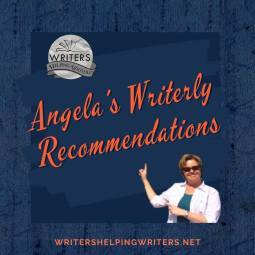
So, three things about me:
I like to help (really, I’m a bit psycho about it – be warned)I like to build unique storytelling tools I like to share great resource finds with other writersOnline, I try to match people with the information they need. Sometimes people reach out through email or a Facebook page to see if I can help them solve a problem they’re having. Many writers tend to have similar struggles, and so I often end up recommending the same tools or sites again and again. I thought it might be fun to round up the resources I recommend the most.
#1: The Critique Circle
A lot of writers reach out because they’ve 1) written a book and need guidance on the next steps, 2) they’ve become frustrated because they can’t seem to sell their book and need to know if there’s something wrong with it, or 3), they need an editor for a manuscript. While it sounds like these writers may need different things, likely they don’t. All three could benefit from the same thing – unbiased feedback.
Critique Circle is an online community where you can submit your work for critique and offer feedback to others in turn. You’ll get a variety of critiques (six, ten, maybe more) from writers at different levels. Having six sets of eyes (or more) on your work means collectively you’ll get some good guidance on what to fix, and multiple critiques can help with spotting patterns. If several folks are all pointing out the same or similar issues, you know there’s a problem to fix.
You might be wondering why I would send someone who is submitting to agents and publishers to a critique group and not an editor, right? Well, it’s simple: many writers submit before they’re ready. (I sure did, back in the day.) And taking your book to an editor right off the bat is going to cost money, whereas the Critique Circle is free (they do have a paid plan, too). Starting with a free option is a good first step.
So, unless a person tells me they’ve extensively workshopped a book and have already used critique groups, I recommend starting at Critique Circle, even if a person just needs an unbiased opinion on whether a book is ready for submitting. Once the writer has learned what they can at the critique level, they can decide if they need to move to an editor, or focus on their query letter & targeting to achieve a better response rate.
#2: ProWritingAid
Another handy-dandy tool I suggest to writers all the time as they polish and tighten is ProWritingAid. It’s a brilliant tool with a free and paid version (and the cost is reasonable and offers great value). As I mentioned above, hiring a freelance editor can be costly, so the stronger you make your writing before seeking one out, the better. And if you are querying, or sending a synopsis and sample pages, you don’t want typos, grammar or weak writing to distract an agent or editor from your brilliant story premise.
#3: Jane Friedman
One reason why it’s such a great time to be a writer is that our community is packed with experts willing to share their experience to help us navigate publishing. In the old days, it was straightforward – you wrote the best book you could, got an agent, and then submitted to publishers. Straightforward, but far from easy. Like today, you needed a stellar book with a fresh premise, a killer query, and then to win the lottery by finding the right agent and editor at the right time, who was looking for a project just like yours. That’s traditional publishing.
Of course now we have self-publishing and hybrid publishing options, too, and so we need to think about the right path for us. Once we decide, we need to buckle in and get ready for a mountain of work. But fear not, writing friend, because we have Jane Friedman‘s beautiful brain and her step-by-step guidance as we navigate the publishing path we’ve chosen.
Jane been in the industry for a long time and knows it inside and out. She’s taken a deep dive into different publishing routes and so has many articles and resources to help writers. (Her blog is also filled with tons of great articles on craft and marketing, too!)
#4: Buffer
Ah, marketing, the necessary evil. We can write a book, and publish it, but if we don’t market it, chances are, no one will find it. So, we need to proactively think about our audience and how to reach them. I know you’re worried about coming across as car salesman-y, but here’s a secret – marketing isn’t about selling books. It’s about having a focus, being authentic, and building relationships. (You can read more about my FAR Marketing Method here.),
If we want to find our reading audience across the entire world, we should get online and embrace social media to some degree. Don’t worry, we don’t need to do it all, but we should do some, focusing on platforms where our ideal audience hangs out.
A big problem with social media is that it can steal a lot of time, so using tools in the right way can help us be more efficient. A tool I couldn’t live without is Buffer. It allows me to schedule content on all my social platforms, so I’m always sharing helpful articles and occasional items to help people discover how I can help them. Scheduling this content means I get time back to use my social media time to hang out and chit-chat on feeds and DMs, as being social is what it’s really about.
#5: Trello
Between writing, publishing, marketing, and running a business, well, writers juggle A LOT. Lists can be our friend, but having a way to visualize our action items and track important spreadsheets, links and sites in one place is really helpful. Becca and I use Trello, which allows us to create boards, lists, and cards for everything we do from our publication process for each book, to marketing objectives and goals, to brainstorming ideas for blog posts, books, and new tools for One Stop for Writers. Cards can be dragged from one column to the next, reordered, labelled, etc. It’s a brilliant way to map out a to-do list or process, or even brainstorm ideas for a new book. Did I mention Trello has a generous free version? Check it out!
#6: One Stop for WritersAs you know, Becca and I work to help writers strengthen their description skills because the better we get at showing the things that matter in a story, the more readers can truly experience the story, and a good book becomes exceptional. Many are familiar with our Thesaurus Writing Guides, and so write us to see if we have a thesaurus on a particular topic they need help describing.
Ironically, more often than not, we point them to One Stop for Writers because we have many more descriptive thesaurus topics there (16) than we do in book form (7). Our thesauruses are all centralized in one database, meaning it’s all in one place, saving writers time.



The site has a lot of other special lists, generators, worksheets, and crazy-helpful tools (like the Character Builder) that can help writers with everything to do with a story, so even if something isn’t covered in a thesaurus, it’s tackled somewhere. If you’d like to poke around to see all the resources and tools, test drive the 2-week free trial.
#7: Wide for the Win Facebook GroupIf there’s one truth in this world, it’s that writers work freaking hard to get their books into the world. And that work doesn’t stop at writing “the end” or hitting the publish button at Ingram, Amazon, or elsewhere, either.
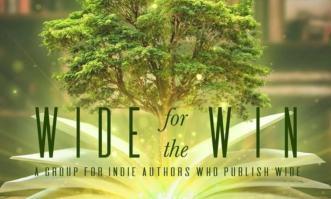
When we choose to be authors, we’re also choosing to become business owners, marketers, publishers, publicists, and accountants. And boy, is there a lot to know.
One of the best sources of information I’ve found is the Wide for the Win Facebook group. It’s over 10,000 strong, and each member is motivated to share knowledge and experience to help one another succeed.
If you’re an indie, this is the group for you. But honestly, I think even if you’re traditionally published, I think there’s a lot to learn here about how to sell. One thing to note – this is a “going wide” group, meaning discussion is around leveraging multiple platforms to reach readers, not restricting a book to Kindle Unlimited.
#8 The Storyteller’s RoadmapAnother thing people ask about is where to hire a story coach (here are some options). A story coach can be wonderful for someone who needs guidance, but for some, the cost is not in the budget. Becca and I created a solution for writers who want step-by-step help but are on a budget – the Storyteller’s Roadmap.

There are a lot of steps to planning, writing, and revising a powerful novel, meaning more than a few places where writers can become stuck, blocked, lost, and frustrated enough to quit. It’s important to keep going because this story called out to be written, right? There’s a diamond within, and if it’s written, it can be fixed.
The Storyteller’s Roadmap is your writing GPS, helping you navigate your way to a publish-ready novel. It guides you to what you need as you need it, too, pointing out tools, resources, and advice that help make your job easier. You loved your story enough to start it, and the Storyteller’s Roadmap at One Stop for Writers will help you finish it.
#9: I Need Help With… Resource Mother Lode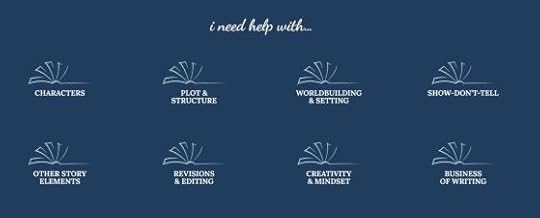
Finally, last year when we redesigned Writers Helping Writers, we built a powerful I need help with… section on the home page with our very best articles, tools, tip sheets, and more. You’ll find a ton of help in key areas, not only to help you write a stronger story, but also market your book, and manage your mindset and business. Just choose your topic to find what you need:


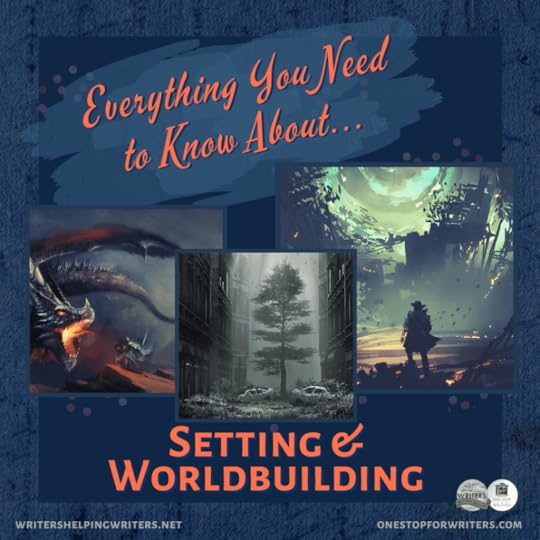




 These are my top recommendations…what are yours?
These are my top recommendations…what are yours?The post The Sites I Recommend the Most to Writers appeared first on WRITERS HELPING WRITERS��.
March 19, 2022
Fear Thesaurus Entry: Certain Kinds of People
Debilitating fears are a problem for everyone, an unfortunate part of the human experience. Whether they’re a result of learned behavior as a child, are related to a mental illness, or stem from a past wounding event, these fears influence a character’s behaviors, habits, beliefs, and personality traits. The compulsion to avoid what they fear will drive characters away from certain people, events, and situations and hold them back in life.
In your story, this primary fear (or group of fears) will constantly challenge the goal the character is pursuing, tempting them to retreat, settle, and give up on what they want most. Because this fear must be addressed for them to achieve success, balance, and fulfillment, it plays a pivotal part in both character arc and the overall story.
This thesaurus explores the various fears that might be plaguing your character. Use it to understand and utilize fears to fully develop your characters and steer them through their story arc.
 Fear of Certain Kinds of People
Fear of Certain Kinds of PeopleNotes: A person who has been traumatized may become fearful of the kind of person who hurt them���men, women, people of a certain race or nationality, members of law enforcement, the government, etc. There can be other causes, such as an irrational fear resulting from a mental illness or being conditioned in their upbringing to be afraid of certain people groups. Regardless of how it arises, this goes beyond a simple trust issue; a fearful mindset toward certain kinds of people will restrict the character’s options and who they’re willing to interact with, limiting them in many ways.
What It Looks Like
Avoiding places where the people they fear are likely to be
Becoming anxious when an opportunity arises that will bring the character in contact with the people they fear
Speaking disparagingly about the people
Gravitating toward media that affirms their bias (watching movies with “those kinds of people” as the bad guys, subscribing to podcasts or YouTube channels that affirm their beliefs, etc.)
Their demeanor changing when someone from that people group enters their space (falling silent, not making eye contact, watching them furtively, becoming confrontational, leaving the room, etc.)
Showing signs of physical distress when faced with the people they fear: going pale, extremities trembling, accelerated breathing, clenched fists, etc.
Crossing the street to avoid close proximity to those people
Taking a work-from-home job that ensures the character will never run into the people they fear
Surrounding themselves with their own kind of people (hanging out with women, the character immersing themselves into their own culture
The character worrying so much about running into those people when they go out that they become homebound
Feeling endangered when those kind of people are around
Others viewing the character as ignorant, biased, or discriminatory
Strained relationships with family members because of the character’s ideas about certain people
Feeling misunderstood
Speaking out against that people group in an effort to protect or inform others
Common Internal Struggles
The character being challenged when they meet someone they fear who seems to defy their ideas
Wanting to shelter loved ones from certain kinds of people but being unable to do so
Recognizing that the fear may be irrational but not being able to change the fear response
The character knowing their fear is interfering with their friendships but clinging to it anyway
Seeing so clearly that the fear makes sense but not being able to convince others
Flaws That May Emerge
Antisocial, Callous, Cynical, Defensive, Disrespectful, Fanatical, Haughty, Hostile, Ignorant, Inflexible, Irrational, Obsessive, Prejudiced, Suspicious, Uncooperative, Withdrawn
Hindrances and Disruptions to the Character’s Life
Missing out on social interactions where certain people might be present
Being limited to certain professions or work projects
Having few friends (because they can’t accept the character’s mindset toward certain people)
Other people not being able to relate to the character because their ideas are so “out there”
The character constantly having to defend themselves to people who disagree with them
Friction with the character’s children when other parents won’t let their kids associate with them because they don’t want them exposed to harmful ideas
Scenarios That Might Awaken This Fear
Having to work with the type of person the character is afraid of
A child, sibling, or other loved one dating “those kind of people”
A person in this group being promoted to a position of power or influence
Being slighted or even marginally disrespected by this kind of person
Other Fear Thesaurus entries can be found here.
 Need More Descriptive Help?
Need More Descriptive Help?While this thesaurus is still being developed, the rest of our descriptive collection (16 unique thesauri and growing) is accessible through the One Stop for Writers THESAURUS database.
If you like, swing by and check out the video walkthrough for this site, and then give our Free Trial a spin.
The post Fear Thesaurus Entry: Certain Kinds of People appeared first on WRITERS HELPING WRITERS��.
March 17, 2022
Choosing the Right Job for Your Character
By Becca Puglisi

As human beings, our work is very important. Choosing a career is one of the biggest decisions we make in life, and we often put a ton of time and energy into it.
But what about our characters��� jobs? How much thought do we put into that?
We authors recognize the importance of strong characterization, agonizing over the smallest details and collating pages and pages of information about our cast members. But unless the story calls for a certain career, their occupation is often an afterthought. We pick something that���s interesting���a career we admire or think is cool and unique. And we end up with a character who has a job that does absolutely nothing for the story.
This is shortsighted. The details are what make a story shine. When we hand-select the ones that tie into numerous elements, they anchor everything together, building a sturdy foundation for a story with depth. One detail that can accomplish this is the character���s job.

But just like in the real world, there are gazillions of jobs your character can choose from. I know, because Angela and I wrote The Occupation Thesaurus: A Writer���s Guide to Jobs, Vocations, and Careers and, honestly, it almost became The Occupation Encyclopedia, because there were so many dang jobs to choose from. It was agony figuring out which ones to include and which ones had to be cut. So I know how hard it can be to settle on the right job for a character. Today I���d like to share some factors to keep in mind to help you find the perfect job for your character and your story.
What���s My Story About?This one is obvious, so let���s get it out of the way. Sometimes your story requires a certain job, making the decision about your character���s career easier. James Bond had to be a spy. Raiders of the Lost Ark needed an archaeologist. The Wedding Planner…you get the picture.
So if your story is about a person in a certain career field (It���s about a homicide detective who goes undercover as a kindergarten teacher), or you���re writing a specific genre such as courtroom drama, espionage, or military thrillers, the occupation choice very often has been made for you.
For most stories, though, it won���t be this simple. There are literally dozens of careers that your character could have. Rather than picking one randomly, choose one that will serve your story by tying into an element of characterization.
Consider the following details about your character, and make a list of careers that make sense for each. We���ll discuss what to do with those lists in a bit.
Positive TraitsPeople choose jobs because they fit their personality, so it���s smart to take this into account. Do you know your character���s dominant attributes? If not, figure that out. Then make a list of jobs that would be a good match for someone with those traits. TIP: try this Speed Dating tool that can help you find the right fit!
Talents and SkillsUnless there���s an underlying reason for doing so, characters will often choose a job that they���re good at, one that plays to their strengths. Athletes are skilled at their respective sports, mechanics are good with their hands, and a chef should be able to make tasty food. Consider your character���s aptitudes and abilities, and see which careers might make sense for them. If that talent or skill will specifically be used to help them achieve their story goal, make note of that; any detail that does double duty in this way should have more weight in the decision-making process.
InterestsMany people will choose a job in a field that piques their interest: science, antiques, shopping, working with children, etc. What passions or hobbies does your character have that they might naturally turn into a career?
Values and BeliefsDoes your character hold strong ideals that may motivate them to pursue a certain career path? If they want to make a difference in the world, serve a segment of the population, pursue justice, or right a wrong, those desires can drive them toward a particular job. Explore the character���s important values and beliefs to see if this will play into their decision.
Missing Human Needs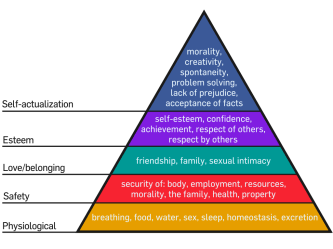
This one, I think, may be the most influential (though subconscious) factor when we choose a job. When any of our basic human needs are missing, we start trying to fill the void. Our actions and decisions are driven by missing needs���and this includes choices about work and careers. A missing human need will often push the character toward (or away) from a certain job. Based on what you know about your character���s past and who they are at the start of your story, which of those needs is missing? Love and connection? Safety and security? Self-fulfillment? What job might the character pursue, believing it will fill that void?
Emotional WoundsOn a related note, emotional wounds from the past can also influence a person���s choice of job. Someone who was a victim of violent crime may choose a career that will enable them to bring criminals to justice or protect the innocent from similar victimization. A character who was raised by a harsh and cruel parent may select a radically different career path as a way of separating him or herself from that caregiver.
Unresolved wounds���ones the character may not have dealt with or even recognize���can also play a subconscious part in this decision. Someone who experienced a humiliating failure may avoid their preferred career and choose something that will allow them to underachieve so they won���t have to risk failing again. A character desperate to please a parent may follow in their footsteps out of a desire to gain their approval, even if it means embarking on a career that will make them miserable. Unresolved wounds are often at the root of a missing human need, so if this kind of past experience is influencing your character, take both factors into consideration.
Putting It All TogetherBy this point, you hopefully have a list of job possibilities that relate to various aspects of characterization. Take a look at your options and circle any careers that appear on more than one list. Those are good prospects because they tie into multiple characterization details, making them realistic options that will provide depth. You now have a short list of jobs that make sense for your character and your story.
If pulling multiple characterization details together to find the perfect job seems daunting, we���ve created a tool that simplifies the process. You can download a blank copy of this Career Assessment, and if you���ve picked up a copy of The Occupation Thesaurus, you can see a completed sample there.
Real people don���t typically choose jobs randomly, and characters shouldn���t either. Don���t make careers a background detail. Bring them to the forefront and put them to work for your story.
Need more help? Checkout this list of jobs and careers.
The post Choosing the Right Job for Your Character appeared first on WRITERS HELPING WRITERS��.
March 15, 2022
Is My Story A Mystery, Horror or Thriller?

By Lucy V Hay
Lots of writers enjoy mystery, horror and thriller novels ��� but are not too sure what differentiates them. As a result, when they attempt their own, they might get stuck.
As a script editor in the UK who���s worked on predominantly horror and thriller, plus as an author myself who has written mystery, I am in a position to advise!
First up, let���s take a look at mystery.
MysteryI had one of those English Literature teachers who���d bellow ���To know a word is to define a word!��� This means I always look first at the dictionary. Here���s what it says about mystery:
A novel, play, or film dealing with a puzzling crime, especially a murder.
“the 1920s murder mystery, The Ghost Train”
This is an okay definition. Whilst mystery typically involves a crime ��� Agatha Christie is STILL the queen of the genre ��� it���s the ���puzzling��� nature that is most important.
Typically there will be a BIG REVEAL at the end when the person BEHIND IT ALL is unveiled. Mysteries tend to be cerebral on this basis.
HorrorHere���s what the dictionary says about this one:
A literary or film genre concerned with arousing feelings of horror.
“a horror film”
In other words, we want to be SCARED by Horror. That tracks! So far, so good.
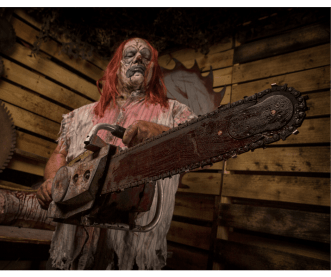
Horrors tend to lay out the potential threat from the beginning: a creature, a serial killer, a haunted house, etc. This means in a Horror we are principally VOYEURS. We sign up to watch terrible things happen to people.
In certain subgenres, this is obvious. So-called ���torture porn��� movies like the SAW franchise invite us to witness murder and mayhem in ever-increasingly spattering ways.
But even in less grotesquely flamboyant horror, the story will relate to a cultural, base fear most of us have.
Fears for our children (especially them dying); fears of being taken away/sent into a hell-like place; fears of being out of control; about sex, rape, pregnancy or other violations; of being eaten alive, being dismembered, or burned alive.
What���s more, these types of story feel unstable and make us worry FOR the characters in it ��� And yes, maybe even freak out when said characters are attacked and/or killed. This is why groups of characters picked off one by one can be so popular in horror stories.
ThrillerA novel, play, or film with an exciting plot, typically involving crime or espionage.
“a tense thriller about a diamond heist that goes badly wrong”
This is less illuminating. After all, mystery can involve crime or espionage too ��� Plus there���s lots of thrillers that do neither of these things. Now what??
Wait! The keyword in this definition is ���exciting���. As the name ���thriller��� suggests, our story just needs to THRILL. This usually happens with some kind of deadline as a ���race against time���: a chase, if you will.
In contrast to Horror, the Thriller invites the viewer to put themselves in the protagonist���s place. The story will ask, ���What would YOU do?���.
*Something* is happening ��� but the characters in the center often don���t know exactly what and/or why. They will��chase after this mystery in order to solve it����� whether it���s a conspiracy, a supernatural occurrence, an abduction, or something else.
Thrillers typically relate to a more��intellectual fear��most of us have, such as our children being kidnapped; of abduction/being held hostage; of living in an unsafe home; having our identities��stolen; being watched or persecuted in some way; of authorities who cannot be trusted, such as governments, teachers, or medical staff. This is why the lone protagonist in a Thriller is so popular.
So what���s the breakdown here?A Mystery needs a BIG REVEAL of whom is BEHIND IT ALL (usually at the ending, but not always)Mysteries tend to be puzzles that need to be solvedIn Horror, we sign up for the SCARESHorrors tend to be voyeuristicHorrors often focus on groups of people, picked off one by oneThrillers don���t tend to be Horrors (since Horrors lay out the threat from the beginning)In a Thriller, we sign up for the CHASEThrillers often focus on lone protagonists who are ���up against it���Thrillers tend to be ���races against time���Mysteries may be Thrillers as well, or they may notA Big QuestionI believe we can decide what our novels are by asking one BIG question ���
������ Do I want to keep my antagonist hidden until the ending or not?���
If you don���t want to keep the antagonist hidden, you���re probably writing a horror. This is because you need to establish the threat from the outset.
If you DO want to keep your antagonist hidden for that BIG REVEAL, then you���re probably writing a mystery or thriller.
(Of course this will depend on the story, we���re talking generalizations here ��� but from my work with writers, it���s surprising how often this question works!).
Learn the ConventionsSo, if you���re writing a Horror, obviously your novel needs to be scary. A good way of studying the conventions of Horror is by considering why your favorite Horror novels scared *you*.
In my case, Heart-Shaped Box by Joe Hill scared me so much it took me a whopping three weeks to read it because I kept getting creeped out!
The story of a washed-up rock star who buys a ghost on the internet he then can���t get rid of, the threat in Heart-Shaped Box is established early on. Hill piles of dread by the ton, making even the smallest moments seem frightening. As the chapters build towards a bloody, crescendo ending, we can���t be sure anyone will get out alive.
If you���re writing a thriller or mystery, it���s slightly different. Personally, I favor mystery elements in Thriller (if not a full-blown mystery) because I love twists. This may ��� or may not ��� feed your BIG REVEAL, it���s up to you.
But if you���re hiding your antagonist���s true intentions, you need to be careful. One of the biggest issues B2W sees when writers try this is they hold the antagonist back BUT don’t replace that role function with another. This then means there’s a big fat hole where ‘nothing happens’.
Devices such as red herrings, misdirection, working theories, a stooge antagonist, etc. will help you write a satisfying plot AND compelling characters in your thriller or mystery.
In other words, stuff that **stands in for the perp** … ’til we get to the actual perp.��
You can do this no matter what genre or type of story you are writing. Immerse yourself in the mystery genre via mystery novels, movies, & police procedurals to guide you.��
Still Confused?Perhaps my good friend writer/director JK Amalou���s definitions of mystery, horror and thriller will help. He says ���
���Each genre hits a different part of your anatomy. Mystery: your brain because it goes into overdrive. Thriller: your heart because it beats faster. Horror: your intestines because you s*** yourself. You���re welcome!���
Good luck!
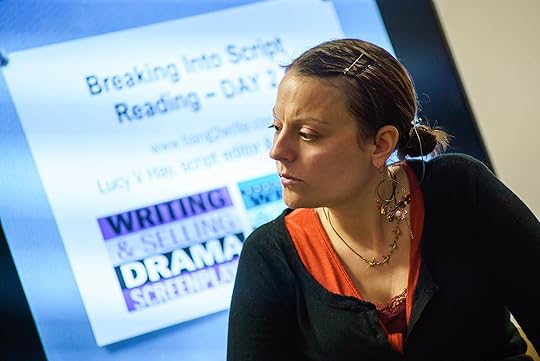 Lucy V. Hay
Lucy V. HayResident Writing Coach
Lucy is a script editor, author and blogger who helps writers at her site, Bang2write.com. To get free stuff for your novel or screenplay, CLICK HERE.
Twitter �� Facebook �� Instagram
The post Is My Story A Mystery, Horror or Thriller? appeared first on WRITERS HELPING WRITERS��.
March 11, 2022
Fear Thesaurus Entry: Being Capable of Harm
Debilitating fears are a problem for everyone, an unfortunate part of the human experience. Whether they’re a result of learned behavior as a child, are related to a mental illness, or stem from a past wounding event, these fears influence a character’s behaviors, habits, beliefs, and personality traits. The compulsion to avoid what they fear will drive characters away from certain people, events, and situations and hold them back in life.
In your story, this primary fear (or group of fears) will constantly challenge the goal the character is pursuing, tempting them to retreat, settle, and give up on what they want most. Because this fear must be addressed for them to achieve success, balance, and fulfillment, it plays a pivotal part in both character arc and the overall story.

This thesaurus explores the various fears that might be plaguing your character. Use it to understand and utilize fears to fully develop your characters and steer them through their story arc.
Being Capable of HarmNotes: Sometimes destructive thoughts enter the mind, causing us to wonder if we are capable of harming others, either as an uncontrolled response because of some internal driver or deficit, or because we become so single-mindedly obsessed about something (a goal, success, power, etc.) we will do whatever it takes to possess it. For most, these thoughts are fleeting, because common sense prevails – I am moral and have good judgment. For others, though, it becomes a deeply embedded fear: I will harm someone if I don’t safeguard against it.
This fear can play out well in storytelling for characters who are unsure where their moral line is, or worry they will lose control of themselves. It can also be a good fear for a villain if you wish to hint at their humanity and whether they might be self-aware enough to be redeemed. Characters with Harm OCD may be especially susceptible to this fear.
What It Looks Like
The character being afraid of their own anger
Warning people away and discouraging relationships
Not liking to be surprised
Intrusive, irrational thoughts about harming others
Acting out a compulsion to push an irrational thought of harm away (repeating, “I’m a good person. I wouldn’t do that,” several times)
Visible shaking
Panicked breathing
Dropping or moving away from the item that triggers ideas of harm
Keeping people at a physical distance
Having only a few close friends or family members
Having to step away when angry
Creating a buffer of space between themselves and others (just in case)
Making an excuse to leave
Avoiding triggers (refusing to watch violent movies, listen to a reporter detail a sexual assault on the news, or be around weapons)
Asking people if they feel safe
Asking people they are with if they believe the character is capable of harming them (seeking reassurances)
Questioning their actions in the aftermath of an emergency, What if I didn’t run as fast as I could have to get help? What if I wanted that man to suffer?
Avoiding being alone with someone who is vulnerable (a child, an elderly person)
Asking for an opinion on a goal, thought, or decision to “test it,” making sure it’s appropriate
Being slow to act because they need to think it through
Hesitating to commit
Avoiding responsibility and not wanting to lead
Being anxious if they want something (from worry over what they will do to get it)
Explaining their actions or motivations to reassure others they are safe
Common Internal Struggles
Having intrusive thoughts on how to get something in a direct, dark way (I’d get full custody if he was dead), followed by shame, fear, or both
An idea forming that it would be easy to hurt someone in a specific way
An impulse to use an item violently (cutting a sandwich at lunch and suddenly imagining using it to stab a family member nearby)
Being irrational: forgetting to return a library book must be a sign they want to deny others the opportunity to enjoy it
Having flashes of violent images
Questioning/worrying they secretly enjoy violence
Constantly examining and questioning their motives
A tendency to magnify small transgressions (bumping someone) and see how dangerous they are (had they been on a subway platform, they would have been pushed into an oncoming train)
Needing to escape situations where anxiety or anger is high before they hurt someone (believing they will)
Mentally reminding themselves of whom they care about and so must be kept safe
Flaws That May Emerge
Addictive, Compulsive, Fanatical, Flaky, Impulsive, Indecisive, Inhibited, Insecure, Irrational, Needy, Nervous, Obsessive, Oversensitive, Paranoid, Subservient, Superstitious, Timid, Uncommunicative, Withdrawn, Workaholic, Worrywart
Hindrances and Disruptions to the Character’s Life
Struggling to build bonds with others (for fear of harming them)
Choosing to settle or underachieve so to not activate their “darker side” by setting big goals
Feeling easily overwhelmed
Having a hard time with choices or decisions
Coming across as needy and dependent (needing constant assurances)
Low self-esteem because the character finds it hard to love or accept themselves
Holding back to stay in control of emotions (fearing ‘big’ feelings)
Avoiding conflict whenever possible, leading to fear and a lack of fulfillment
Scenarios That Might Awaken This Fear
Being alone around children or someone who is vulnerable
Being responsible for the welfare of others
Having to make a decision where people could be negatively impacted
Being around triggering objects or situations that bring intrusive thoughts
Being blocked from what they want most
Being pulled into an argument
When people get aggressive
When strong, negative emotions are activated
When someone they love is in danger or at risk
When they see a police officer or police car
When they have a competitor
Other Fear Thesaurus entries can be found here.
 Need More Descriptive Help?
Need More Descriptive Help?While this thesaurus is still being developed, the rest of our descriptive collection (16 unique thesauri and growing) is accessible through the One Stop for Writers THESAURUS database.
If you like, swing by and check out the video walkthrough for this site, and then give our Free Trial a spin.
The post Fear Thesaurus Entry: Being Capable of Harm appeared first on WRITERS HELPING WRITERS��.
March 10, 2022
Scenes vs. Sequels: What���s a Good Balance?
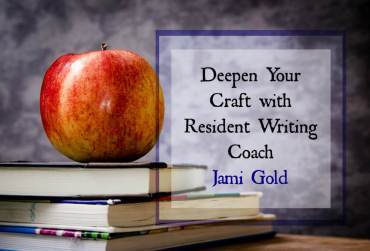
By Jami Gold
We use the terms scene and sequel for so many definitions when it comes to writing that it can be difficult (not to mention confusing) to discuss Dwight Swain���s ideas of ���scenes and sequels��� (from his Techniques of the Selling Writer). But if we understand his insights, we can take a deeper look at our storytelling:
Does our story have a good sense of cause and effect?Does it feel more proactive than reactive?Have we evoked enough emotions in our readers to make our story compelling?Analyzing our story���s balance of scenes versus sequels can help us answer those questions and fix any issues we find, but first, we must understand Dwight���s ideas well enough to be able to apply them to our writing. Once we understand the differences and purposes of his scenes and sequels, we���ll be able to tell if our story has the ���right��� balance.
What Are Dwight Swain���s Definitions for ���Scenes and Sequels���?Step One in understanding Dwight���s ideas is to know how he defines scenes and sequels���
His definition of ���scene��� has nothing to do with the school-type description of an event happening in a specific place or time, or the storytelling definition of a mini-arc that ends with a line break. Instead, Dwight Swain���s idea of a scene focuses on goals, actions, and obstacles:
Goal: What the protagonist wants at the beginning of the scene.Conflict: The obstacles standing in the way.Disaster: The outcome, what happens that prevents the protagonist from reaching their Goal.Likewise, his definition of ���sequel��� has nothing to do with the next book in a series. Instead, Dwight Swain���s idea of a sequel focuses on character reactions and choices:
Reaction: How the character reacts to the Disaster.Dilemma: The choice the character faces because of the Disaster.Decision: What the character decides to do next (new Goal or new attempt to reach old Goal).In other words, scenes tend to be more plot or action-oriented (proactive), as characters take action to move the story forward. Sequels tend to be more character or reaction-oriented (reactive), as characters absorb and apply the lessons learned and decide ���now what?���
What Do They Look Like in Our Story?When we put those ideas together, our story grows into a cause-and effect chain of a scene (with the Goal, Conflict, Disaster elements) followed by a sequel (with its Reaction, Dilemma, Decision elements). That sequel is then followed by another scene with its Goal prompted by the sequel���s Decision.
In simplistic terms, all that could something like:
She headed into her meeting with her boss, armed with notes for how she planned to get a raise. Or a promotion. Either way, she wanted to come out ahead. (Goal)
���Have a seat, Nancy. I know you wanted to talk with me, but I���m afraid I have some bad news to share first.��� (Conflict)
Her boss took a deep breath. ���We have to let you go.��� (Disaster)
What? No. Her head shook with her unspoken denial. (Reaction)
She couldn���t lose this job. It was her path to everything she wanted. (Dilemma)
No, there had to be another option. She���d make her boss see that. (Decision)
���Is this because of the new direction from corporate? If so, I have a different suggestion������ (new Scene with an adjusted Goal)
Obviously, this example is sparse and lacking in narrative description and transitions. In our story, those steps would usually play out over much longer passages than just the two lines listed for each here, but this example gives us a look at how the progression through the steps works in our writing.
By using scenes and sequels in sequence, we create a cause-and-effect chain that creates narrative drive in our story. Using both also ensures a mix of proactive action and reactive emotion to keep readers engaged.
We Need a Balance of Scenes and SequelsIf we���ve heard the advice to ensure our character is proactive rather than reactive, we might assume that sequels are bad for our story. However, from a reader perspective, our stories are about far more than just ���the things that happen.���
Our stories are about emotions, and how our characters react to events shapes how readers emotionally react to our story. If we don���t show our character reacting to setbacks, readers won���t care about those setbacks either.
So from both a character perspective and a reader perspective, sequels are how we tie the straightforward plot events to the emotions of both our character���s internal/emotional arc and to the overall story arc. They���re the heart of our story and absolutely essential.
Think of them this way: Sequels give our story depth, as they���re where we can express the ���why��� in our story:
Why should readers care about story events?Why is the Goal important to the character?Why do their motivations matter to story?Why does the setback of the scene���s Disaster matter to the character/story?Why should readers root for the character or their Decisions?The better we show why things matter (whether those ���things��� are events, goals, etc.) in our story, the more our story will matter to readers, drawing them into our storytelling.
What���s the ���Right��� Balance of Scenes & Sequels?
All that said, a ���good��� balance doesn���t mean 50% of our story should be made up of these sequels. In most genres, while the action and narrative of scene might run for several pages or most of a chapter, a sequel might be anywhere between:
a single sentence or two of a character reacting to a Disaster setback and recommitting to the Goalseveral paragraphs (perhaps even a page or more) of a character debating their options for a new GoalIn other words, the ���right��� balance is not about the percentages. Instead, it���s about whether the sequels we include:
create a sense of cause and effect by showing our characters��� reactions and decisions for the next step in the story narrativeavoid a sense of ���navel gazing��� or redundancy, such as by ensuring introspection ends in a Decisionresult in the right pacing for our story (longer sequels tend to slow pacing down and vice versa)encourage readers to relate to characters through their motivations, emotions, and/or decision-making processcreate our character���s internal arc by exploring the lessons learned (with epiphanies, etc.)For example, in the sparse example shared above, we could easily flesh out the scene���perhaps adding whole conversations with coworkers wishing our character luck along her way to the boss meeting, for instance���creating a much longer passage. At the same time, we���re more likely to leave the sequel a similar length as given above because that length does the job we need it to, as far as showing a reaction, providing insights into the character, and ending with a trigger for the next scene. However, a bigger turning point or plot event might need a longer sequel to explore all the fallout and changes.
Our story���s context and genre determine the ���right��� balance. But once we understand scenes and sequels, we���ll be able to fix most non-plot-related problems in our story by improving our use of sequels. Yes, really. *smile*
For more about how to use sequels with our scenes, check out this post on my blog. Do you have any questions or insights about Dwight Swain���s concept of sequels and how the right balance can help our story?
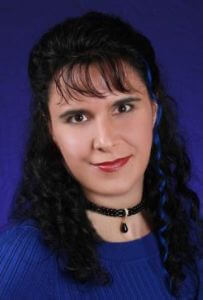 Jami Gold
Jami GoldResident Writing Coach
After muttering writing advice in tongues, Jami decided to put her talent for making up stuff to good use. Fueled by chocolate, she creates writing resources and writes award-winning paranormal romance stories where normal need not apply. Just ask her family���and zombie cat.
Website | Goodreads | Twitter �� Facebook �� Pinterest
The post Scenes vs. Sequels: What���s a Good Balance? appeared first on WRITERS HELPING WRITERS��.
March 8, 2022
Phenomenal First Pages Contest
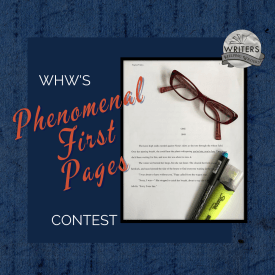 Hey, wonderful writerly people! It���s time for our monthly first-page critique contest
Hey, wonderful writerly people! It���s time for our monthly first-page critique contest 
If you���re working on a first page (in any genre except erotica) and would like some objective feedback, please leave a comment. Any comment :). As long as the email address associated with your WordPress account/comment profile is up-to-date, I���ll be able to contact you if your first page is chosen. Just please know that if I���m unable to get in touch with you through that address, you���ll have to forfeit your win.
Two caveats:
 Please be sure your first page (double-spaced in 12-point font) is ready to go so I can critique it before next month���s contest rolls around. If it needs some work and you won���t be able to get it to me right away, let me ask that you plan on entering the next contest, once any necessary tweaking has been taken care of. Resources for common problems writers encounter in their opening pages can be found here.
Please be sure your first page (double-spaced in 12-point font) is ready to go so I can critique it before next month���s contest rolls around. If it needs some work and you won���t be able to get it to me right away, let me ask that you plan on entering the next contest, once any necessary tweaking has been taken care of. Resources for common problems writers encounter in their opening pages can be found here.
 This contest only runs for 24 hours, start to finish, so get your comment in there!
This contest only runs for 24 hours, start to finish, so get your comment in there!
Three commenters��� names will be randomly drawn and posted tomorrow morning. If you win, you can email me your first page and I���ll offer my feedback.
We run this contest on a monthly basis, so if you���d like to be notified when the next opportunity comes around, consider subscribing to our blog (see the right-hand sidebar).
Best of luck!
PS: If you want to amp up your first page, grab our helpful First Pages checklist from One Stop for Writers. And for more instruction on these important opening elements, see this Mother Lode of First Page Resources.The post Phenomenal First Pages Contest appeared first on WRITERS HELPING WRITERS��.
March 5, 2022
Fear Thesaurus Entry: Relational Commitment
Debilitating fears are a problem for everyone, an unfortunate part of the human experience. Whether they’re a result of learned behavior as a child, are related to a mental illness, or stem from a past wounding event, these fears influence a character’s behaviors, habits, beliefs, and personality traits. The compulsion to avoid what they fear will drive characters away from certain people, events, and situations and hold them back in life.
In your story, this primary fear (or group of fears) will constantly challenge the goal the character is pursuing, tempting them to retreat, settle, and give up on what they want most. Because this fear must be addressed for them to achieve success, balance, and fulfillment, it plays a pivotal part in both character arc and the overall story.
This thesaurus explores the various fears that might be plaguing your character. Use it to understand and utilize fears to fully develop your characters and steer them through their story arc.
 A Fear of Relational Commitment
A Fear of Relational CommitmentWhat It Looks Like
A lackadaisical attitude and approach to dating and friendships
Dating many people at once to maintain superficial relationships
Breaking things off if a relationship gets too serious
Sabotaging serious relationships (treating the other person badly so they’ll leave, picking fights, ghosting them, etc.)
Being disloyal���cheating on a romantic partner or abandoning an old friend for a new one
Abandoning a fianc�� at the altar
Continually postponing a wedding date or refusing to set a date
Reluctance in making future plans
Being nonchalant about even short-term plans, such as not preparing for date night until a few hours prior
Not dating at all or investing in new friendships
A lack of excitement, passion, or interest in the relationship or the other person
Thoughts of commitment causing physical or emotional distress (shortness of breath, anxiety, hyperventilating, nausea, etc.)
Having many casual friends but few deep and long-lasting ones
Frequently canceling get-togethers with friends
Being a one-sided friend (only reaching out when the character needs something, only getting together when it’s something the character really wants to do, etc.)
Being inflexible
Always having an “escape plan” so the character can leave an event early if they want to
Living on the outskirts of true community
Being more comfortable with strangers and acquaintances than with friends
Keeping a lot of pets to fill the void
Common Internal Struggles
Wanting connection but being unable to move past a certain point to achieve it
Experience fight-flight-or-freeze responses when commitment becomes a possibility
Doing things to push the other person away, then feeling guilt, shame, or self-loathing
The character knowing something’s wrong with them but not knowing what it is
Wanting to change (recognizing the fear and knowing the unresolved wound that’s behind it) but not being willing to do so
Hindrances and Disruptions to the Character’s Life
Spending a lot of nights along
Being perceived as selfish and superficial by others
Being a third wheel at social events
Having no one to confide in
Experiencing a crisis and having no one to care for the character
Constantly having to explain the latest breakup to people
Unpleasant conversations with parents or siblings who see the truth and confront the character
Scenarios That Might Awaken This Fear
A romantic partner proposing marriage, suggesting they move in together, or asking to meet the character’s parents
A romantic partner saying I love you
Someone important to the character dying and reinforcing the knowledge that everyone eventually leaves so it’s best not to get too close
Playing a bonding game with friends, where personal information is shared
Being invited to vacation with friends
Being asked to play a significant role in a friend’s wedding
The character being asked point-blank by a trusted loved one about their commitment issues
Other Fear Thesaurus entries can be found here.
 Need More Descriptive Help?
Need More Descriptive Help?While this thesaurus is still being developed, the rest of our descriptive collection (16 unique thesauri and growing) is accessible through the One Stop for Writers THESAURUS database.
If you like, swing by and check out the video walkthrough for this site, and then give our Free Trial a spin.
The post Fear Thesaurus Entry: Relational Commitment appeared first on WRITERS HELPING WRITERS��.
March 3, 2022
Tips for Landing a Guest Posting Gig

By Becca Puglisi
Guest posting can be a great idea for a number of reasons. First, you���re helping a fellow blogger by providing valuable content that they don���t have to write themselves. Most bloggers are crazy busy, so having someone write a relevant, quality post for them is usually a godsend. At the same time, you���re providing that valuable content to potential followers who aren���t part of your regular audience���people who just might traipse on over to your blog and find out more about you and your books.
Angela and I love to host quality guest posters at our blog, but the process of finding those people can be frustrating. We have to turn away many more potential posters than we accept���usually for superficial reasons that can easily be avoided.
So if you���re a writer who���s interested in guest posting (or podcasting, being interviewed on a radio show, etc.), read on through today���s therapy session as I work through my angst about common pitfalls in this area.
To maximize your chances for success, here���s what you should do���
When You���re Requesting to Guest PostFollow the Blogger���s Preferred Procedures for Guest Posting
Bloggers have different ways of signing people up to post at their site. And if the blog you���re interested in is sizable, chances are, you���re not the first person to ask about writing for them. To simplify their lives, bloggers will typically create guidelines that provide the important details so they don���t have to answer the same questions over and over.
A cursory search of the blog���s menu bar will usually show you those guidelines. If you can���t find them, try the search bar. If you���re still unable to unearth them, send a quick message to the blog owner letting them know that you���re interested in providing a guest post but you were unable to find their guidelines, and asking them to point you in the right direction. This tells the owner that you���re willing to follow any parameters they have for submitting a post. Believe me: they���ll be happy to hear that you���ve made an attempt in this area.
Offer Content That Hasn���t Been Done to Death
While posting at someone else���s blog can absolutely benefit the writer, it only works because if it also benefits the host. And it only benefits the host when your post offers new or fresh material for their readers.

So before you pitch an idea, look at what���s already been posted there. Most blogs have a Category function that groups content according to its kind. Look up the categories that fit your idea, and read those posts. (You can also use the search bar if you can���t find a breakdown of categories.) If there are already a few posts covering your topic, or one was just posted a few weeks prior, that blog may not be the best fit for your idea.
BECCA���S PET PEEVE: Refrain from asking the host which topics they���d like you to write about. This sounds like a thoughtful thing to do, but it actually creates more work for the blogger as they have to look back and see what hasn���t been covered���essentially doing what you, the potential poster, could have done on your own. Remember: one of your goals in obtaining a guest post should be to make things easier for your host. So do your own homework here and you���ll likely get a better reception.
Offer More than One Topic
If you have multiple post ideas (and you���ve checked to be sure they haven���t been covered too much at the blog), give the host a choice. Our blog has been around in one form or another since 2008. That���s a lot of blog posts and finding new topics that we haven���t just pummeled into the ground can be a challenge. I LOVE when a guest poster provides options because it increases the likelihood that at least one of them will be a viable possibility.
Proofread Your Request before Submitting It
This should go without saying, but���it needs to be said. Your guest post request is kind of like the query letter for your book: it���s the host���s introduction to you and your work. If your submission is wordy, rambling, filled with mistakes, doesn���t provide the requested information, or otherwise needs more work, the host will know that your post is going to be more of the same. So read your request over carefully before sending it.
BECCA���s PET PEEVE: Include your contact information. And make sure that email address doesn���t have typos. /facepalm
When You���re Writing the Guest PostFollow the Host���s Guidelines
By the time you���re given the green light for your idea, you���ve likely been provided with all the info you need to write it. The person you corresponded with (or maybe the guidelines themselves) will have told you the target word count, how much promotion is allowed, what kind of rating is preferred in terms of language, and other blog-specific dos and don���ts. If you have questions, just ask. Again, bloggers want you to have the information you need before you provide the post because it cuts down on the work that has to be done once the post comes in.
Take It Easy with the Promo
Whether you���re reading a blog post, participating in a Facebook group, or engaging with someone on Twitter, one thing remains true about self-promotion: too much is a turn-off. This is especially true in a blog post, because the purpose is supposed to be providing practical information to the reader. If every other paragraph contains a plug for the author���s book, product, or service, it starts to get old.
This became such a problem for Angela and me that we decided to restrict promotion to the poster���s bio. This doesn���t have to be your rule; many bloggers offer more latitude in this area. But the principle remains: too much promotion defeats your purpose of helping the host and their audience. So keep it to a minimum.
Proofread, Proofread, Proofread
There comes a point when the effort to edit a guest post just isn���t worth the host���s time. Like your manuscript when you start sending it out, your efforts are much more likely to be rewarded if your post is clean, practical, and concise.
After the Post is PublishedRespond to Comments
DO NOT skip this one. It���s one of the best ways to gain new followers. Continue the conversation. Make real connections. Provide more help by answering commenters��� questions or pointing them toward people and resources that can. Even a simple Thanks so much for reading, or I���m so glad the post was useful can make a lasting impression.
Promote the Post on Social Media
Again, the guest posting opportunity is all about quid pro quo. A great way to help out your host is to share your post on your own channels, encouraging your followers to head over and check it out. Sure, they���re going to be reading your post, but they���re also visiting the host���s blog. It would be great for the blogger who gave you this opportunity to pick up a few followers they didn���t have before.
Now, maybe you don���t see this as a good thing. Maybe you���re concerned that turning your readers on to other blogs will pull them away from yours. In all honestly, this is not something to worry about. As a writer, how many bloggers do you follow? Don���t you have different go-to people, depending on what information or specific experience you���re looking for? Writers benefit from helping other writers. They just do. So get out there and share the love.
And get moving on those guest post requests! Everyone has something to say, knowledge to share from their own unique perspective. Put these tips to use, expand your audience, and help out a fellow writer at the same time.
The post Tips for Landing a Guest Posting Gig appeared first on WRITERS HELPING WRITERS��.
Writers Helping Writers
- Angela Ackerman's profile
- 1014 followers



